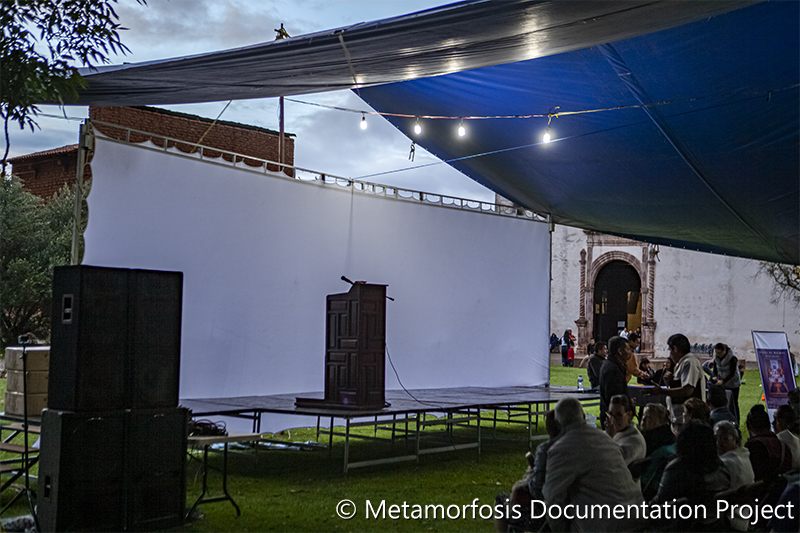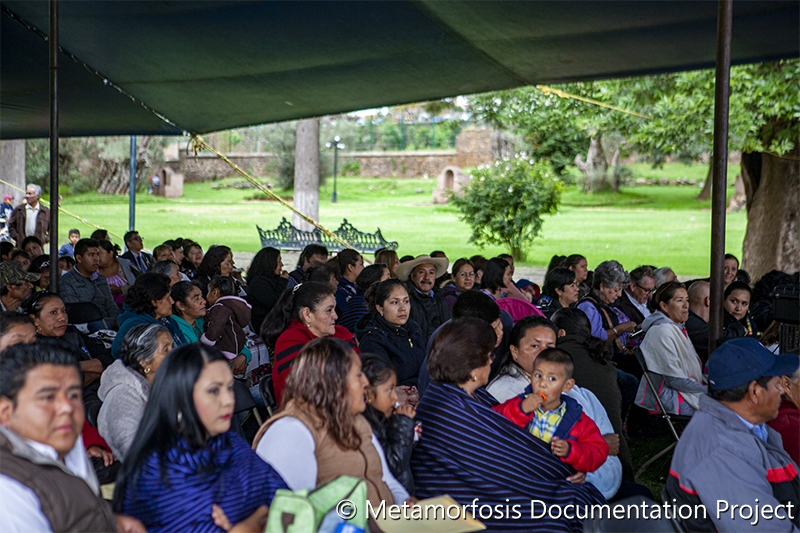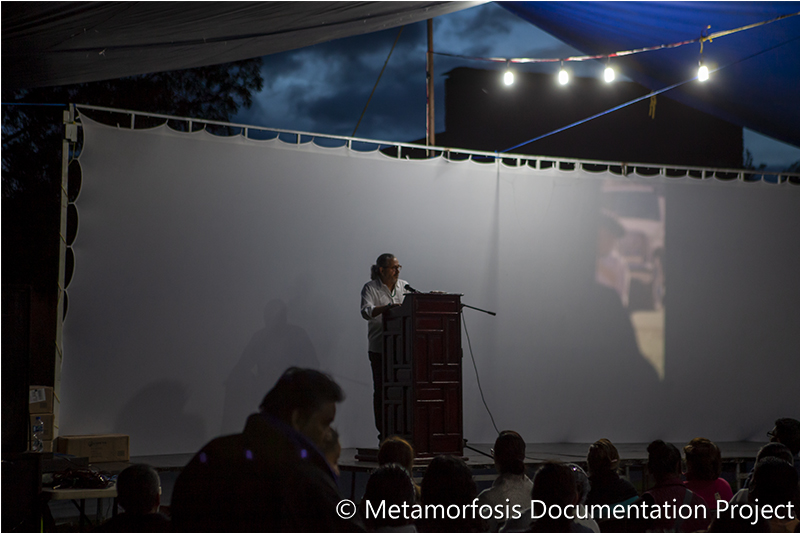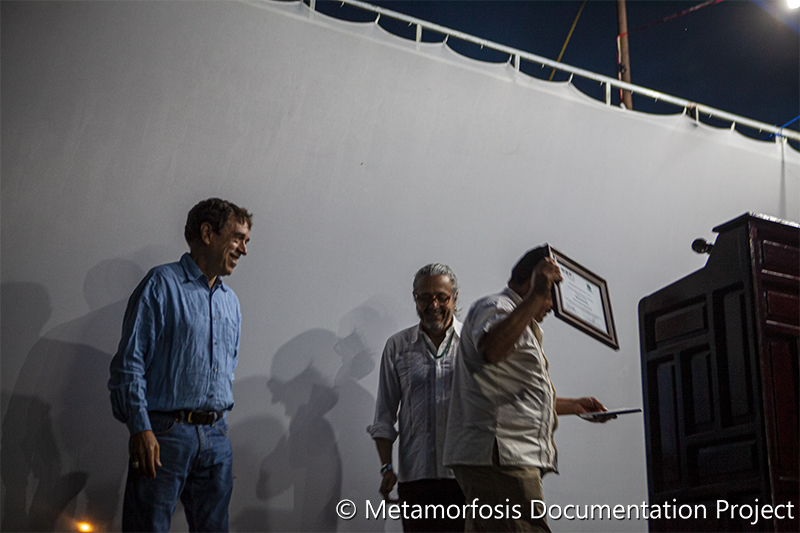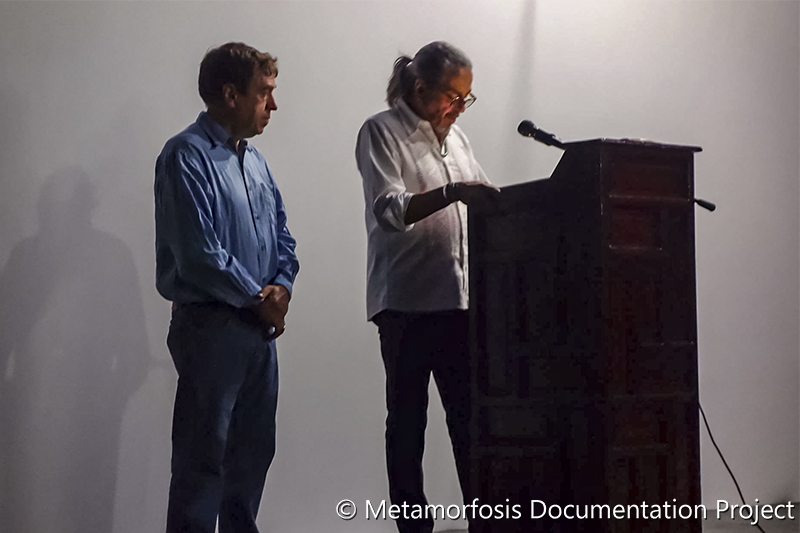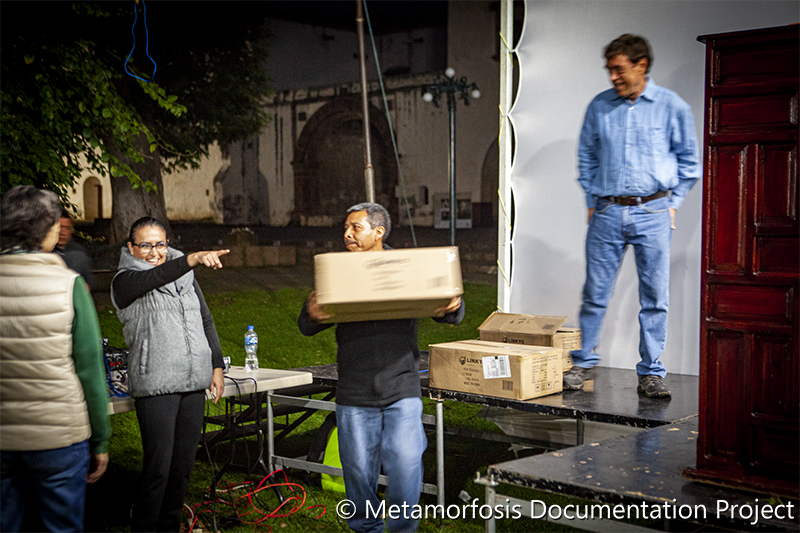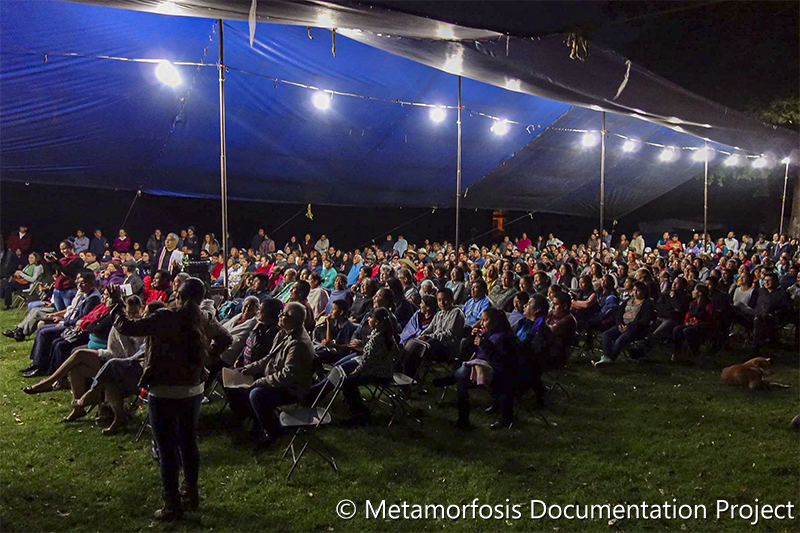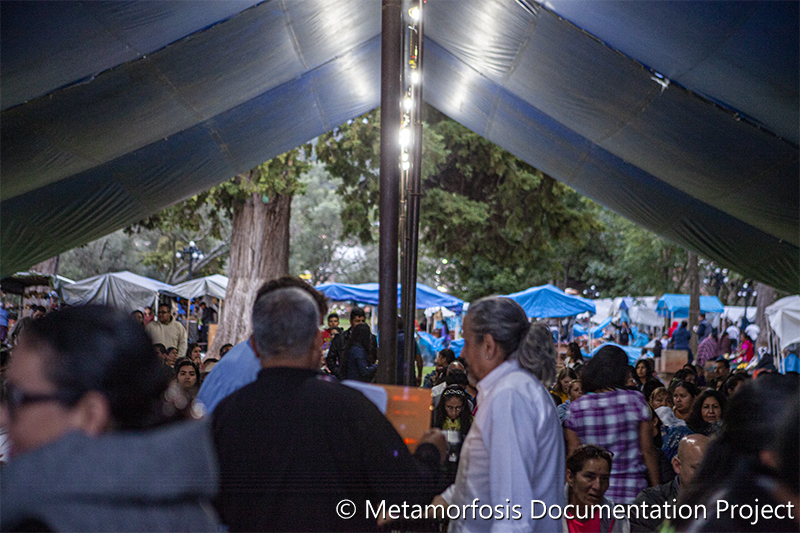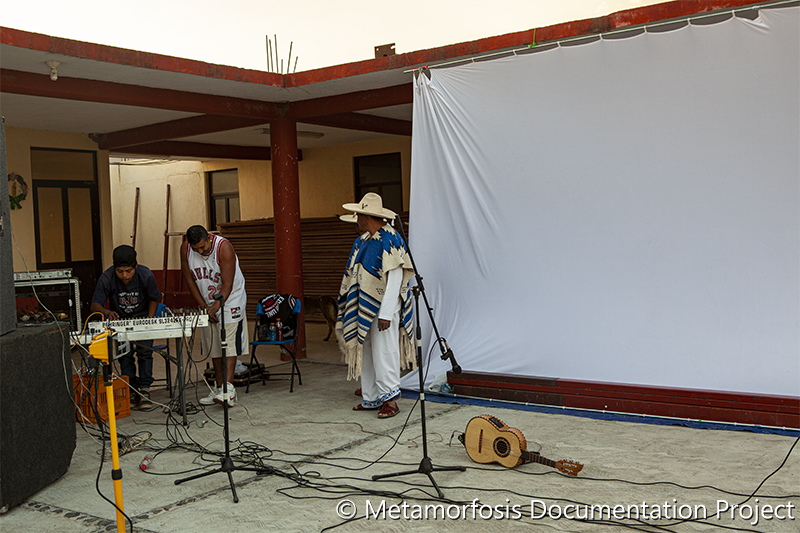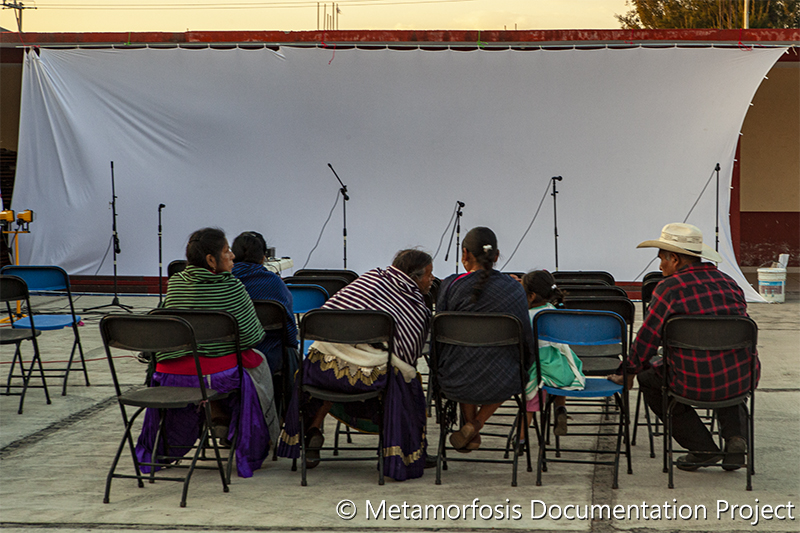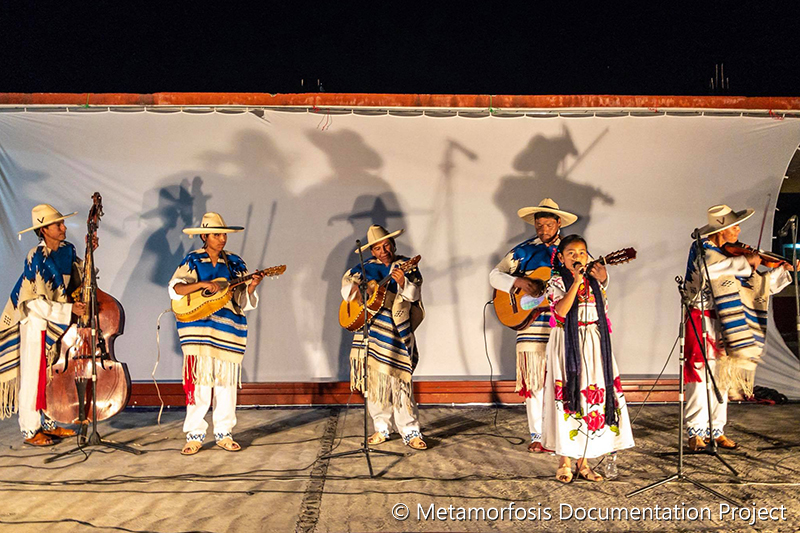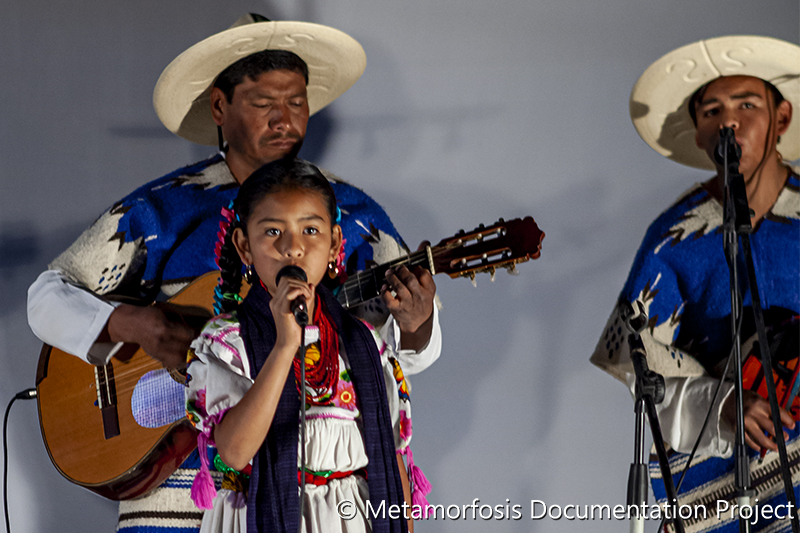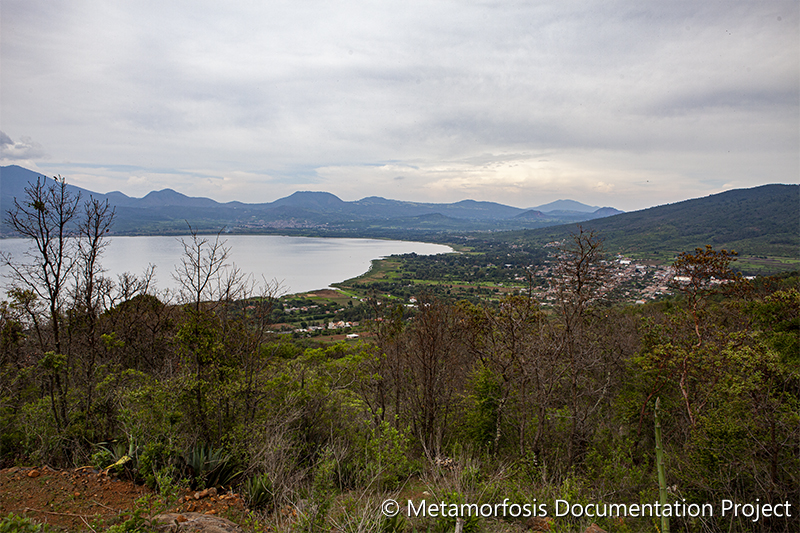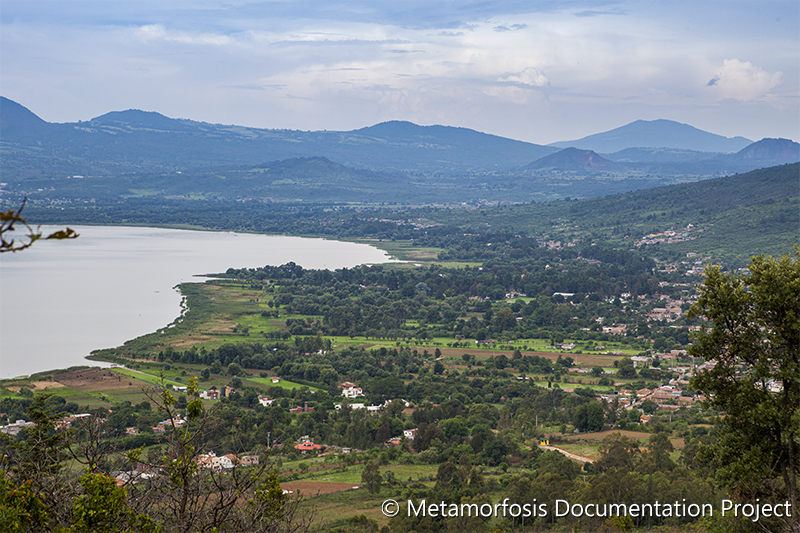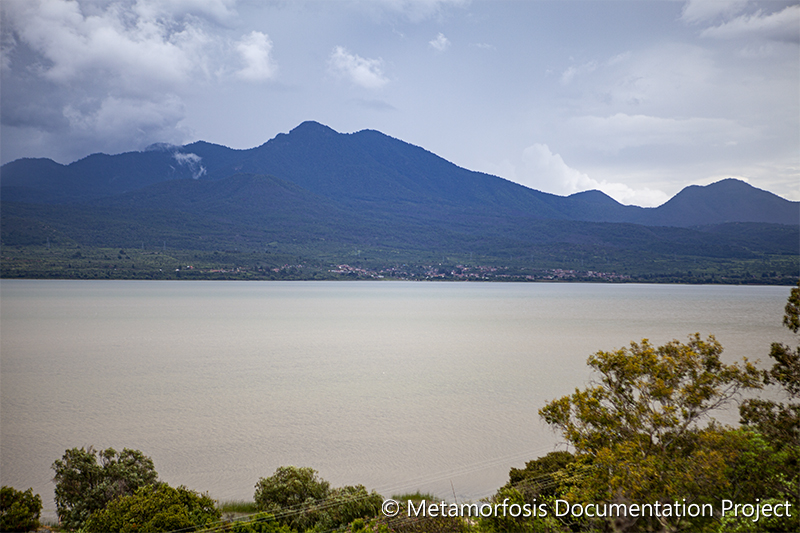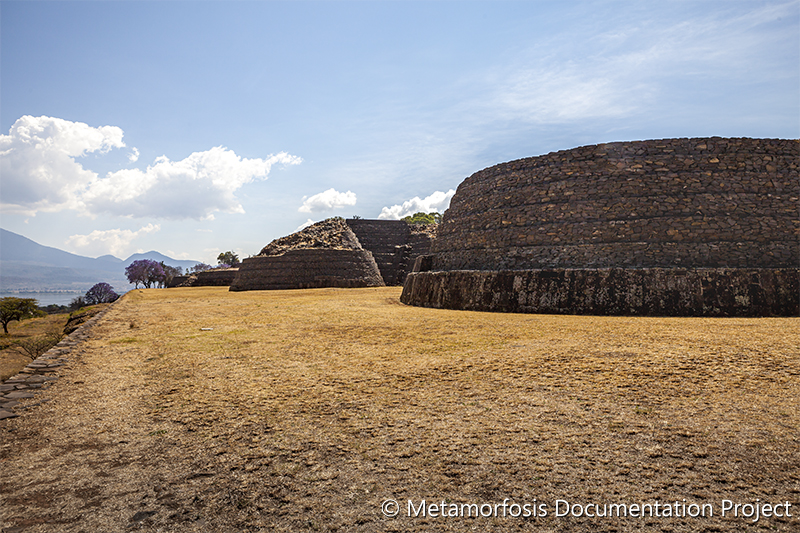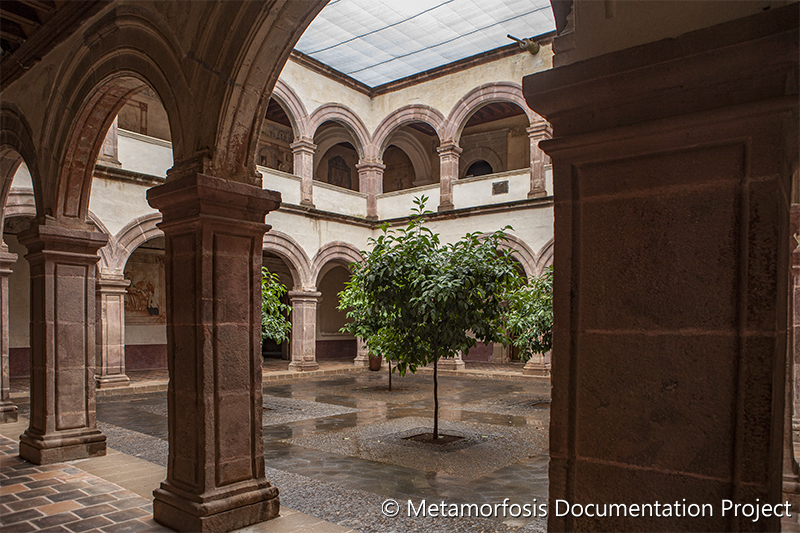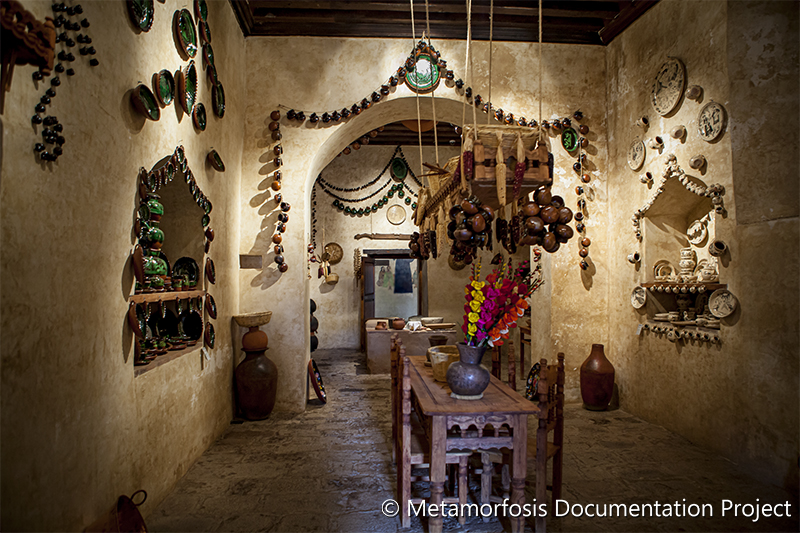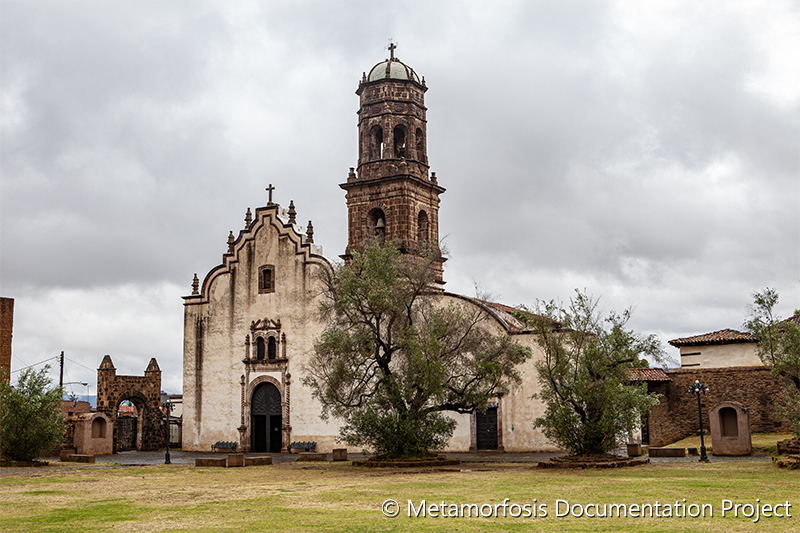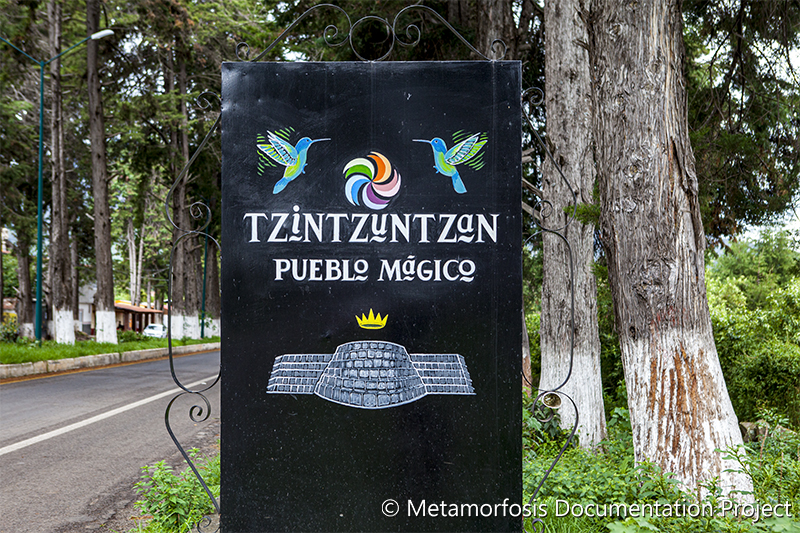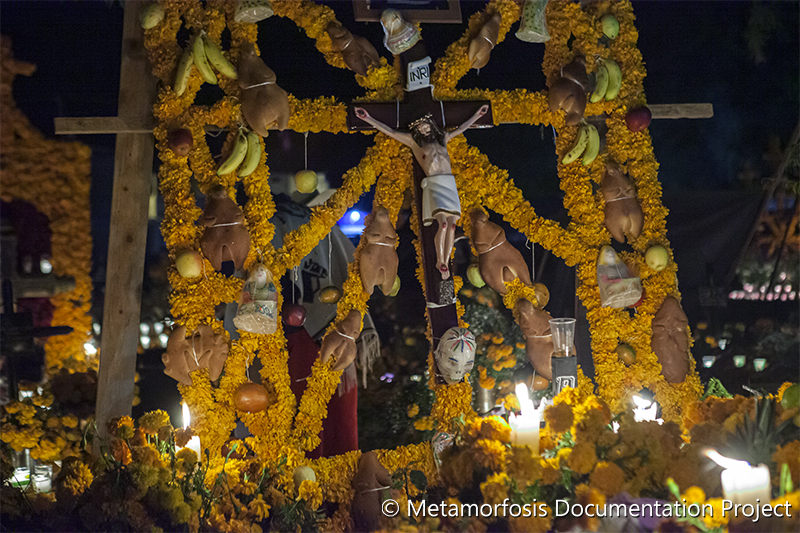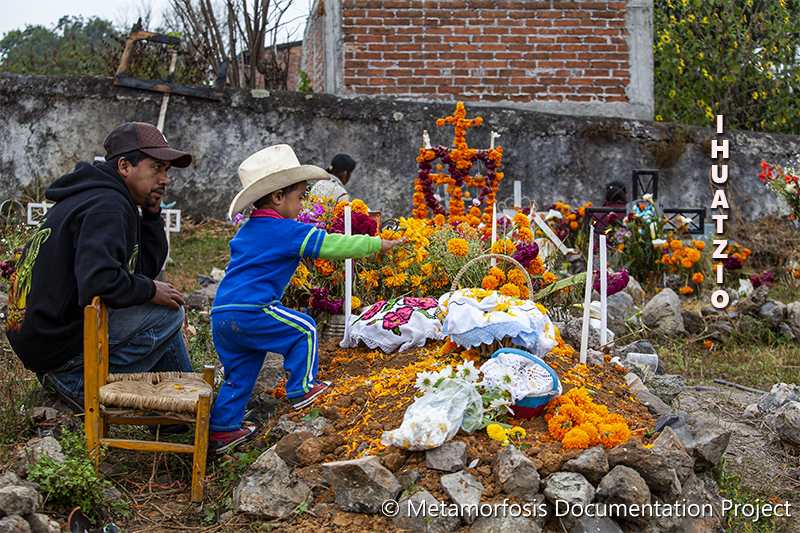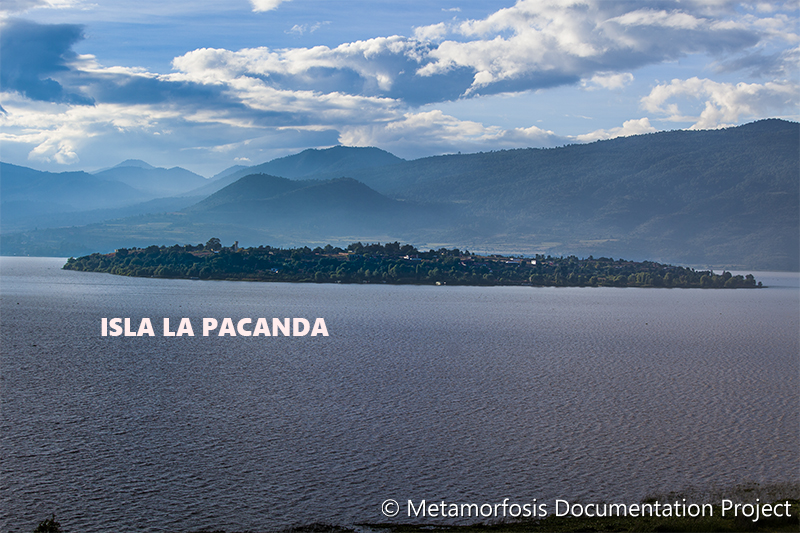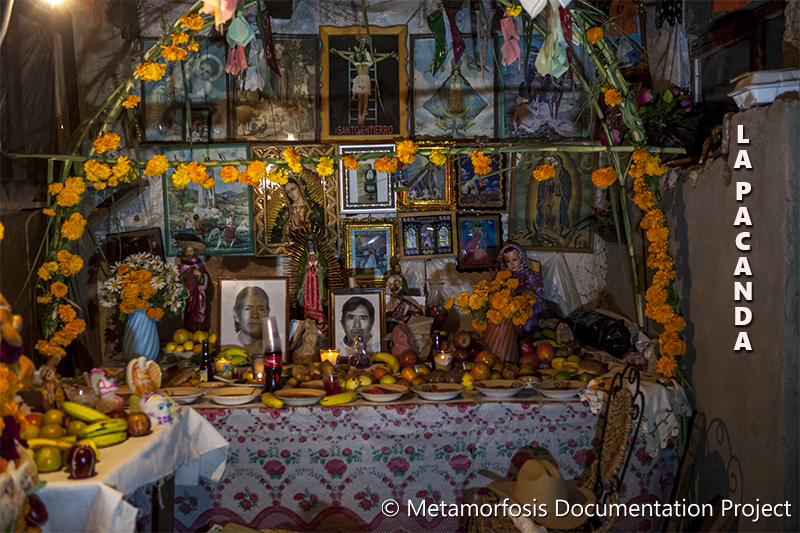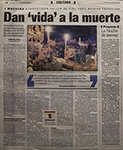Presentation of the Documentary "Noche de Animas. Tzintzuntzan"
In September of 2017, in a community event at the Courtyard of the Religious Complex in Tzintzuntzan, we presented the world premiere of “Noche de Animas. Tzintzuntzan”. We also granted rights of reproduction and sale of the documentary to the Centro Cultural Comunitario “Tzintzuntzan” and donated three hundred copies of the documentary to the Centro Cultural.
The event was a marked success: community attendance surpassed our expectations, the film was very well received by all, and many DVD’s of the film were sold that evening.
Afterwards, we also screened the documentary locally for the communities of Ihuatzio and La Pacanda. We continue to screen the film whenever possible in Mexico and the USA.
Tzintzuntzán is a mestizo community with strong Purhepecha roots located in the north of the state of Michoacán, 53 km from the capital city of Morelia, on the northeast shore of Lake Patzcuaro. It was the capital of the vast Purhepecha (Tarascan) Empire, which was conquered by the Spanish in the 1520’s. The municipality of Tzintzuntzan encompasses the town of Tzintzuntzan and a number of indigenous communities. Tzintzuntzan is a small town with two major attractions: the archeological site of Tzintzuntzan and the Religious Complex comprised of its large Courtyard, the San Francisco Church (the seat of the parish), the Chapel of the Virgin of Solitude and the former Convent of Santa Ana.
The recently and exquisitely restored ex-convent is headquarters of the Centro Cultural Comunitario “Tzintzuntzan”. The former convent also houses the parish archives and offices and a museum. This museum, Museo Antiguo Convento de Santa Ana, features a small but important collection of cultural and historical artefacts, both lay and religious of pre-Hispanic and Spanish origins, as well as a contemporary representation of Purhepecha culture in this lakeside environment. Tzintzuntzeños are well known for their distinctive styles of pottery and these skilled and talented artisans continue to produce beautiful, sought-after ceramics and crafts. Along with other communities in the lakeside area, they have traditionally made their living harvesting the riches of the lake. Tzintzuntzan has been designated as a “Pueblo Mágico”.
The Programa Pueblos Mágicos (Magical Towns Program) is an initiative led by Mexico's Department of Tourism (SECTUR), in conjunction with other federal and state agencies, to promote a series of towns around the country that offer visitors a "magical" experience – by reason of their natural beauty, cultural riches, or historical relevance.
Noche de Animas in Tzintzuntzan is one of the foremost manifestations of the feast of Day of the Dead in all of Mexico, and in the last few decades it has become an important tourist destination. Noche de Animas is a complex and colorful feast. It is comprised of extensive preparations and rituals which honor recently deceased family members and remember, welcome, and celebrate all departed relatives.
The blending of the Catholic religion and Purhepecha spirituality has created these unique celebrations. The rituals and celebrations begin five months prior to the actual Day of the Dead, when the cempazuchitl (marigold) flower is planted for the celebrations.
In this way the rituals begin with the rainy season and culminate at the beginning of the dry season, with the harvest – the time to share with the souls of the dead and with neighbors, family and friends.
Reciprocity with the departed plays an important part of the rituals; and the novena for the recently departed (nine days of prayers and offerings for these souls) is essential to assure their well-being.
Ihuatzio is a Purhepecha community with enormous historical importance and continues to be a bastion of Purhepecha culture. Part of the Municipality of Tzintzuntzan, it is 7 kilometers south-east of the town of Tzintzuntzan, on the south-eastern shore of Lake Pátzcuaro.
An important historical community, in pre-Hispanic times it shared with Patzcuaro and Tzintzuntzan the power of the Purhepecha (Tarascan) Empire. Its celebration is similar to the celebration in Tzintzuntzan; and the preparations are very much the same, except in Ihuatzio they celebrate the Octava. There they believe the souls of the dead stay with them for a week; so on the eighth day after “Noche de Animas” they go to the cemetery to bid farewell to their souls. They bring offerings to the cemetery and adorn the tombs once again as they pay their respects to their departed family members. They won’t have a chance to share with them again until the next year.
La Pacanda is an island in the center of Lake Patzcuaro and part of the Municipality of Tzintzuntzan. It is inhabited by close to five hundred people and is a quiet, very traditional community of farmers and fisherman.
Ichupio is another indigenous community that is part of the Municipality of Tzintzuntzan. Since Ichupio does not have a cemetery, their dead are buried in the cemetery in Tzintzuntzan; but all the preparations and family celebrations take place in the community of Ichupio in people’s homes and the local church.
